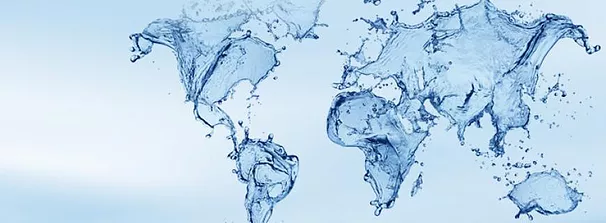
In the past many Caribbean islands relied on collected rainwater, stored in cisterns, for their everyday needs. As harmonious with nature as this sounds, the reality is expensive (because building and properly maintaining a cistern for potable water adds a large capital and operational cost) and not totally reliable. Today, the region’s modern water infrastructure plays a major role in making our tropical life possible.
On many island inhabitants fresh water is produced by desalinating water from the surrounding sea, primarily using a process called reverse osmosis (RO). In a nutshell, RO uses powerful pumps to push salt water through a semi-permeable membrane, forcing fresh water out the other side. With today’s technology, 40% of the salt water is converted to clean drinking water. Although the technology is ever improving in efficiency, a large amount of energy use is unavoidable. The principal energy source for RO plants is electricity, which, in turn, is predominantly produced by burning fossil fuels. As such, our water is produced indirectly from fossil fuels, the price of which fluctuates depending on the global market and local taxation policies.
In order to explore further, I’ve performed a basic analysis to estimate the amount of diesel used to produce a gallon of tap water in the Cayman Islands.
To read the analysis please visit: http://www.reallife.ky/editorial/brian-roffey








